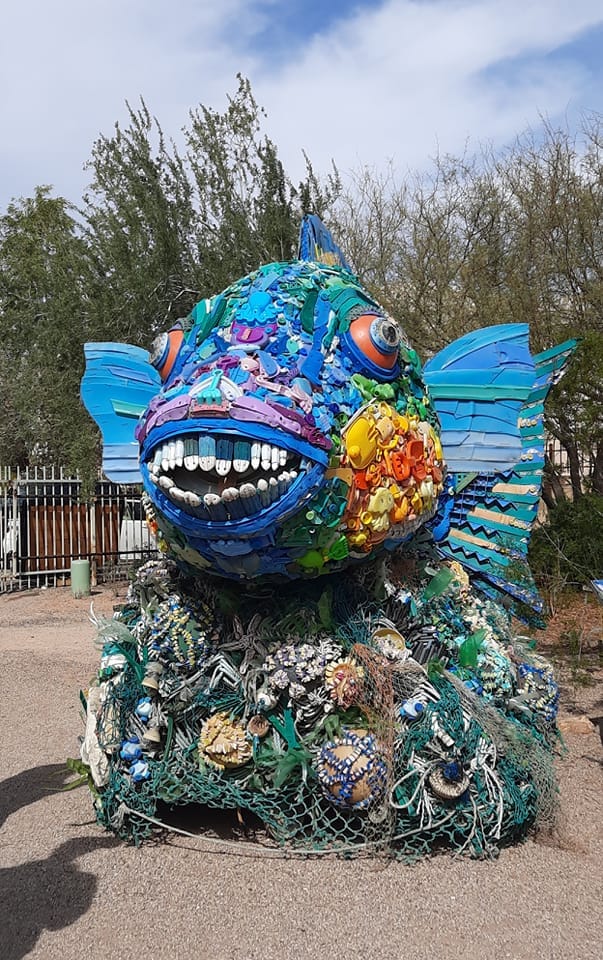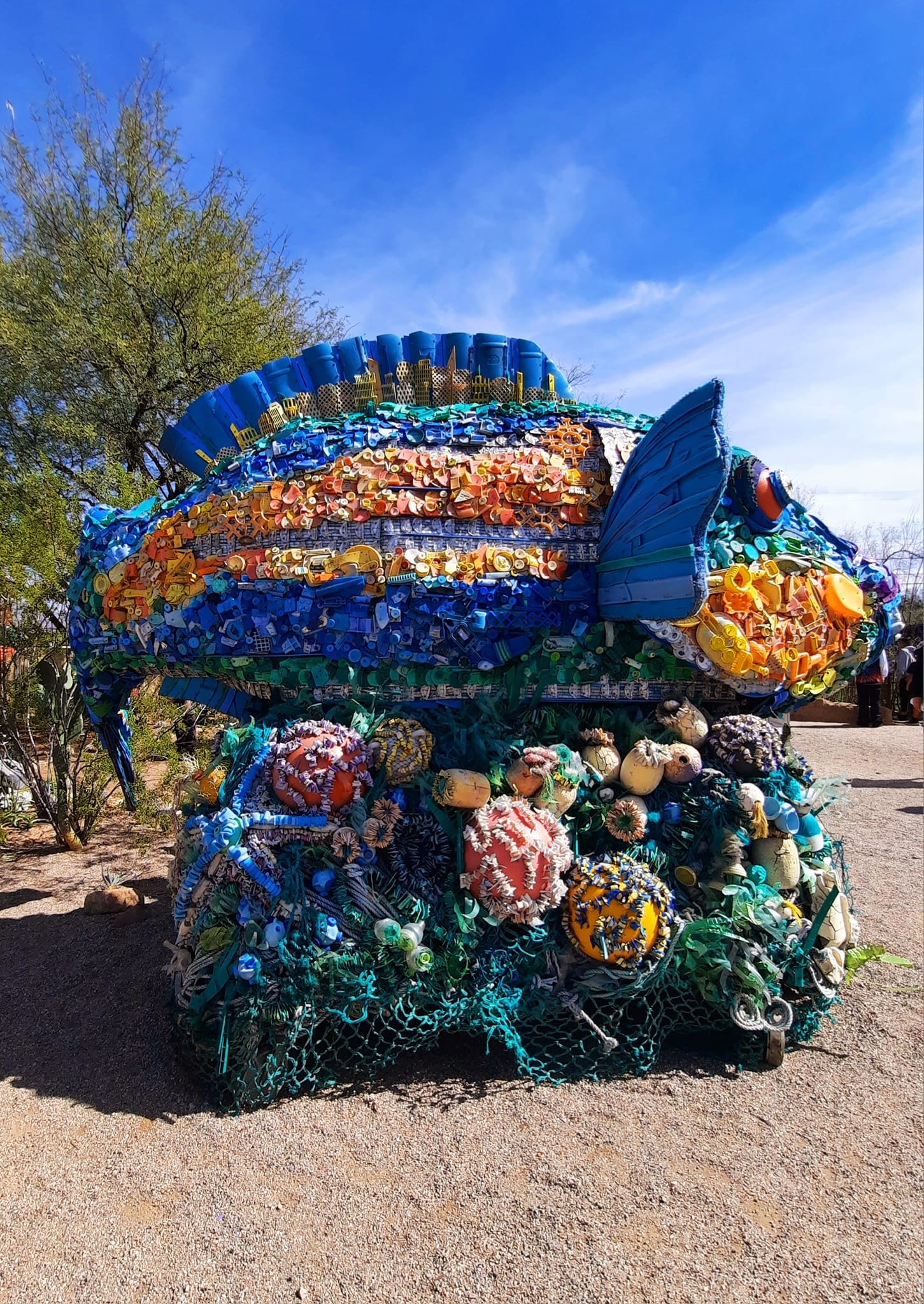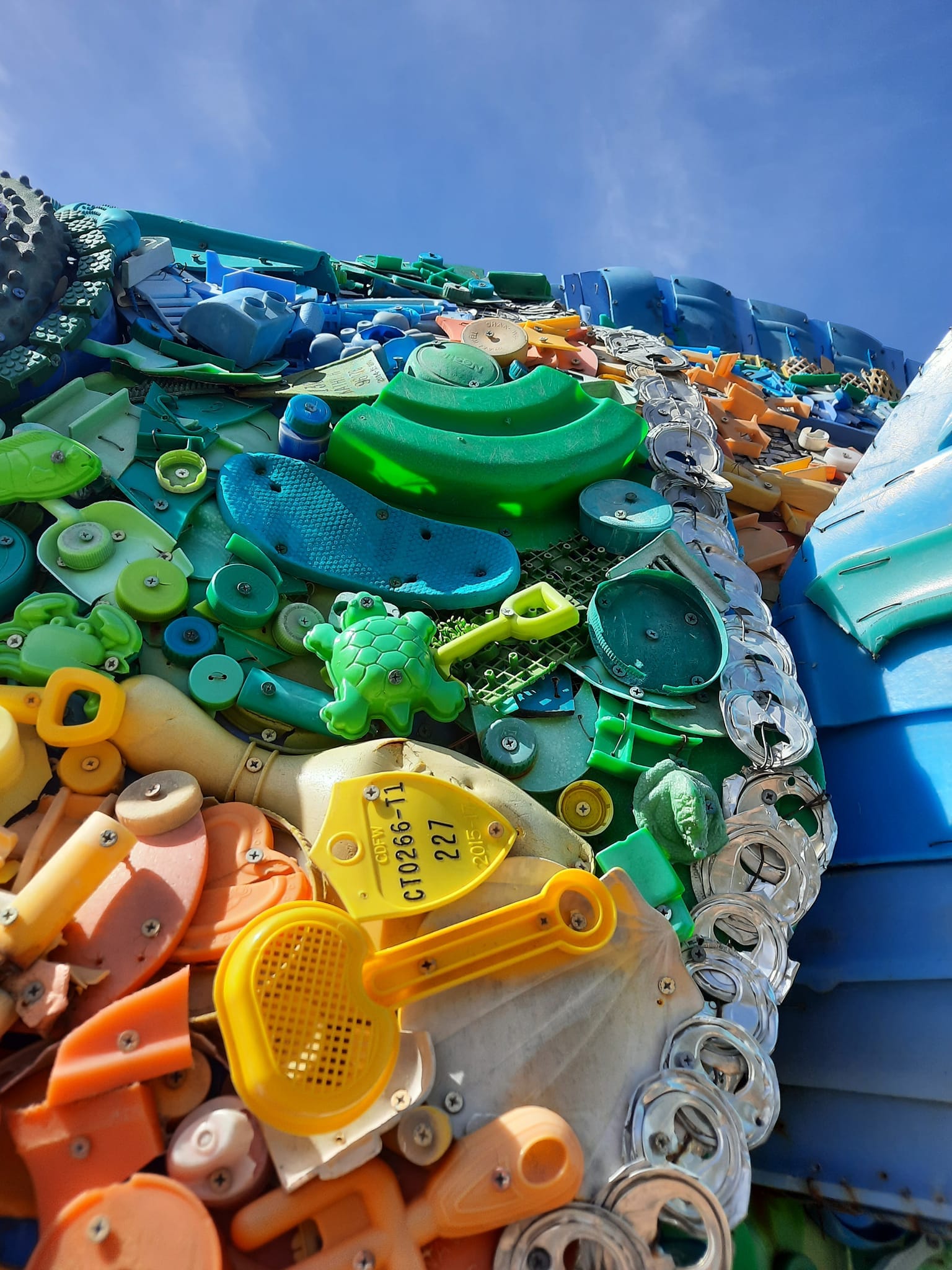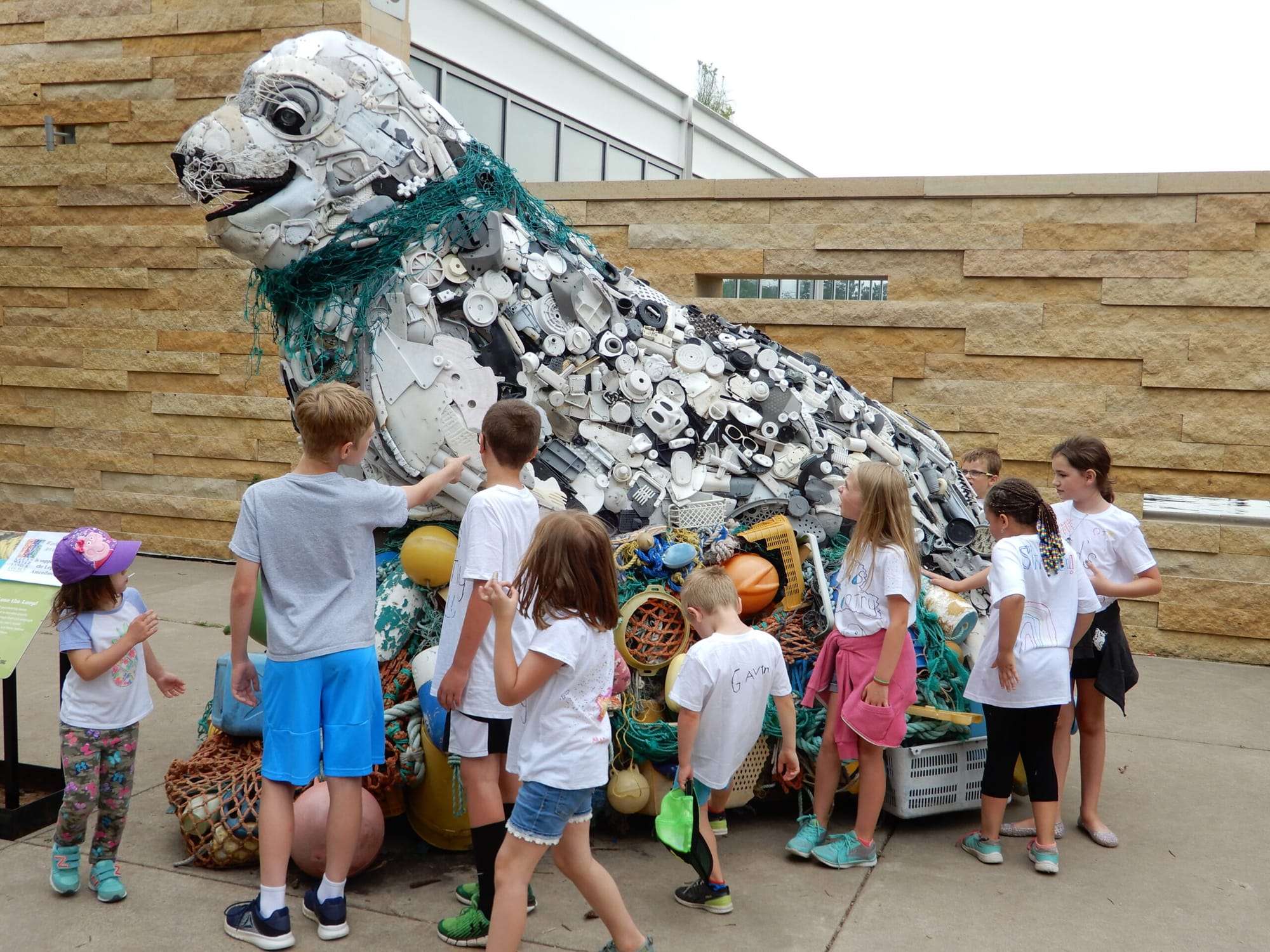Today we welcome back Rev. Elaine Breckenridge as our guest writer as she shares how an art exhibit helped her become a better ecological disciple.
Imagine taking a walk in a botanical garden in the Sonoran Desert and finding creatures belonging to the ocean! Such was the case when I recently visited the Tucson Botanical Garden. The creatures are actually large statues, rendered from plastics washed ashore on the Oregon Coast. Meet Zorabelle the Rockhopper:

This traveling art exhibit is the brainchild of artist and art educator Angela Haseltine Pozzi. She is also the founder of the non-profit organization named Washed Ashore: Art to Save the Sea, which is a project of the Artula Institute for Art and Environmental Education. The mission of Washed Ashore is “to build and exhibit aesthetically powerful art to educate a global audience about plastic pollution in the ocean and waterways and to spark positive changes in consumer habits.”
The catalyst for this project occurred in 2008. Pozzi had lost her husband after a prolonged illness and moved to Oregon knowing that she would need beauty and the ocean to help heal her deep grief. As she walked on nearby beaches, she saw trash, especially plastics, washing ashore and marring her path.
Like others walking the beach, she stepped around the litter. That changed the day she was shocked to see a wrack line of plastics the length of the beach as far as she could see. As she watched people along the shoreline side-stepping the trash to collect agates and shells for their buckets, she had an idea. She thought, “I have to figure out how to get those people to pick up the plastic stuff. And I have to get people to see this mess and this enormous problem of plastics polluting our oceans and beaches. People are not seeing, and this is bad!”
Washed Ashore volunteers walk beaches gathering plastic debris and trash. Once these are collected and sorted, a team of artists creates a statue of an ocean animal. Below is a picture I took of Priscilla the Rainbow Parrotfish.

They are playful and colorful creations, and none have been painted. In exhibits, each sculpture is accompanied by a sign describing the animal depicted. Viewers are invited to look closely and identify what plastic objects were used to craft the sculptures. It soon becomes sobering to see these art pieces and realize that the represented creatures live in such polluted and sometimes dangerous debris fields.
In Tucson, several statues were on display, many under mesquite trees and surrounded by other desert plants. The statues, in that incongruent setting, immediately evoked my curiosity. Their sheer whimsey was delightful and evocative. I began to reflect on the fact that these creations were constructed of the very types of materials that I have disposed of over the course of my lifetime. Perhaps my plastics have ended up in one of the world’s oceans! However, seeing the plastic transformed into an artistic inhabitant of an eco-system that I love compelled me to reflect not only on humanity’s misuse of creation but on my own.

It is no surprise that plastics (along with other garbage) litter the coastlines of the world. However, until I saw this art exhibit in Tucson, I had no idea of the magnitude of the problem. The Washed Ashore exhibit opened my eyes, just as Pozzi’s experience of seeing the shore-lined debris had opened hers.
My experience that day and subsequent learning about this project has transformed my choices regarding the purchase of plastics. During Holy Week this year, as I pushed my cart down the toy aisle, I was wondering about what gift to purchase for my grandsons for Easter. More plastics for an Easter Egg hunt? A cute little bunny that squeaks? How about a wind-up chicken that does little somersaults? As I looked at the myriad of plastic toys, I suddenly saw them littering beaches around the world, including the beaches on Camano Island, my home. Since then, I have vowed to avoid purchasing anything plastic, if I can help it.

I have always had a heart for the ocean and for the plants and the animals that live there. I have worried about ocean pollution, but never knew what I could do about it. My visit to this exhibit in Tucson has empowered me to make better choices around my personal plastic use. Learning about this educational and creative organization has also given me hope, a hope embedded in the mystery and reality of resurrection.
I am writing this reflection during the fifty-day season of Easter, when we celebrate and reflect on God’s resurrection of Jesus. In a recent Daily Meditation writing from the Center for Action and Contemplation, Fr. Richard Rohr wrote, “I believe that the resurrection of Christ IS saying that the final judgment has already happened. And God’s final judgment is that God will have the last word! Easter reveals that there are no dead ends. Ultimately, nothing is going to end in tragedy and crucifixion. Here and there, more than we suspect, new life breaks through for those who are willing to see and to cooperate with the universal mystery of resurrection. The resurrection of Jesus is a potent and focused example of what God is still and forever doing with both creation and humanity.” For Rohr, God is not only in the business of resurrecting humanity. God is and always has been in the business of resurrecting creation.
Resurrection is God’s supreme miracle of transformation. I see the Washed Ashore project in the same light. Its work is an example of humanity cooperating in God’s on-going mystery of resurrection which involves not just one man, and not just humanity, but all of creation. Collecting that which is destructive and changing it into an object which teaches people to care about the environment and their own conduct is certainly a sign of resurrection and a beacon of hope.

As disturbing signs of global climate change continue to unfold, I am learning to focus on the positive signs of new life showing up. And I am in a constant process of discerning how I can be a part of God’s ongoing new creation.
I am grateful for having been led to this particular exhibit and the work in general of Washed Ashore. I invite you to experience it as well. If you are in Oregon, consider a trip to one of their locations. You can also visit the Washed Ashore website. You can view their on-line gallery of the wonderful statues, find curriculum, see the exhibit schedule, and find out how you can volunteer.
Perhaps, like me, you will find that art can help you become a better ecological disciple. May we choose to be agents of God’s ongoing work of resurrection which always results in a new creation.
Rev. Elaine Breckenridge
